 W
WEmory Sherwood Adams was an officer in the United States Army who served as Adjutant General from 1938 to 1942.
 W
WEmilio Aguinaldo y Famy was a Filipino revolutionary, statesman, and military leader who is officially recognized as the first and the youngest president of the Philippines (1899–1901) and the first president of a constitutional republic in Asia. He led Philippine forces first against Spain in the Philippine Revolution (1896–1898), then in the Spanish–American War (1898), and finally against the United States during the Philippine–American War (1899–1901).
 W
WRussell Alexander Alger was an American politician and businessman. He served as the 20th Governor of Michigan, U.S. Senator, and U.S. Secretary of War.
 W
WServillano Aquino y Aguilar was a Filipino general during the Philippine Revolution against Spain (1896–1898), and the Philippine–American War (1899–1902). He served as a delegate to the Malolos Congress and was the grandfather of Benigno S. "Ninoy" Aquino Jr.. He is the great-grandfather of Benigno Aquino III, the 15th President of the Philippines.
 W
WRamón Emeterio Betances y Alacán was a Puerto Rican independence advocate and medical doctor. He was the primary instigator of the Grito de Lares revolution and is considered to be the father of the Puerto Rican independence movement. Since the Grito galvanized a burgeoning nationalist movement among Puerto Ricans, Betances is also considered "El Padre de la Patria". Because of his charitable deeds for people in need, he also became known as "El Padre de los Pobres".
 W
WEduard Bøckmann was a Norwegian American ophthalmologist, physician and inventor.
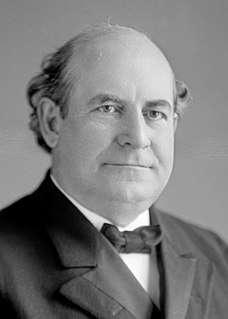 W
WWilliam Jennings Bryan was an American orator and politician. Beginning in 1896, he emerged as a dominant force in the Democratic Party, running three times as the party's nominee for President of the United States in the 1896, 1900, and 1908 elections. He also served in the House of Representatives and as the Secretary of State under Woodrow Wilson. Because of his faith in the wisdom of the common people, he was often called "The Great Commoner".
 W
WHenry Hull Carlton was an American politician, medical doctor, journalist and soldier.
 W
WWilliam Astor "Willie" Chanler was an American soldier, explorer, and politician who served as U.S. Representative from New York. He was a son of John Winthrop Chanler. After spending several years exploring East Africa, he embarked on a brief political career. Chanler regarded it as an American obligation to be on the side of the people who fought for their independence, and during his life he participated in rebellions and independence struggles in Cuba, Libya, and Somalia. He provided support for insurgents in Venezuela, Turkey, and China. He maintained an active lifestyle even after losing his right leg in 1915. Late in life, he became a novelist and an outspoken antisemite.
 W
WJohn Sanford Cohen was a United States Senator from Georgia.
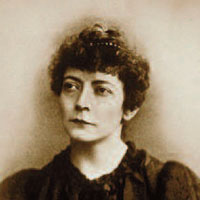 W
WKathleen Blake "Kit" Coleman was an Irish-Canadian newspaper columnist. Coleman was the world's first accredited female war correspondent, covering the Spanish–American War for the Toronto Mail in 1898. Coleman also served as the first president of the Canadian Women's Press Club, an organization of women journalists.
 W
WJames Brendan Bennet "Jamie" Connolly was an American athlete and author. In 1896, he was the first modern Olympic champion.
 W
WGeorge Curry was a U.S. military officer and politician. He was governor of New Mexico Territory from 1907 to 1910, and once it became a state he represented it in the 62nd United States Congress. Curry County, New Mexico is named in his honor.
 W
WRichard Harding Davis was an American journalist and writer of fiction and drama, known foremost as the first American war correspondent to cover the Spanish–American War, the Second Boer War, and the First World War. His writing greatly assisted the political career of Theodore Roosevelt. He also played a major role in the evolution of the American magazine. His influence extended to the world of fashion, and he is credited with making the clean-shaven look popular among men at the turn of the 20th century.
 W
WWilliam Rufus Day was an American diplomat and jurist, who served for nineteen years as an Associate Justice of the Supreme Court of the United States. Prior to his service on the Supreme Court, Day served as the 36th United States Secretary of State during the administration of President William McKinley and also served as a United States Circuit Judge of the United States Court of Appeals for the Sixth Circuit and the United States Circuit Courts for the Sixth Circuit.
 W
WKnown in his own time for his work with the Army's Weather Bureau, Henry Harrison Chase Dunwoody invented the carborundum radio detector in 1906. It was the first practical mineral radio wave detector and the first commercial semiconductor device.
 W
WAnthony Fiala was an American explorer, born in Jersey City, New Jersey, and educated at Cooper Union and the National Academy of Design, New York City. In early life he was engaged in various employments—as lithographic designer, chemist, cartoonist, head of the art and engraving department of the Brooklyn Daily Eagle (1894–99), and correspondent for that paper while serving as a trooper in the Spanish–American War.
 W
WCalixto García Íñiguez was a Cuban general in three Cuban uprisings, part of the Cuban War for Independence: the Ten Years' War, the Little War, and the War of 1895, itself sometimes called the Cuban War for Independence, which bled into the Spanish–American War, ultimately resulting in national independence for Cuba.
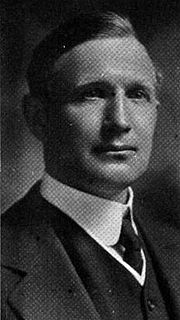 W
WBenjamin Gates was a Vermont attorney and politician who served as Vermont Auditor of Accounts.
 W
WPeter Conover Hains was a major general in the United States Army, and a veteran of the American Civil War, Spanish–American War, and the First World War. He is best known for his engineering efforts, such as the creation of the Tidal Basin in Washington, D.C., and for laying out the Panama Canal.
 W
WJohn Milton Hay was an American statesman and official whose career in government stretched over almost half a century. Beginning as a private secretary and assistant to Abraham Lincoln, Hay's highest office was United States Secretary of State under Presidents William McKinley and Theodore Roosevelt. Hay was also an author and biographer, and wrote poetry and other literature throughout much of his life.
 W
WWilliam Randolph Hearst Sr. was an American businessman, newspaper publisher, and politician known for developing the nation's largest newspaper chain and media company, Hearst Communications. His flamboyant methods of yellow journalism influenced the nation's popular media by emphasizing sensationalism and human interest stories. Hearst entered the publishing business in 1887 with Mitchell Trubitt after being given control of The San Francisco Examiner by his wealthy father, Senator George Hearst.
 W
WGeorge Frisbie Hoar, an American politician and United States Senator from Massachusetts, belonged to an extended family that became politically prominent in 18th- and 19th-century New England.
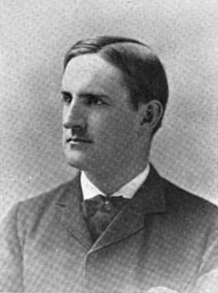 W
WSherman Hoar, was an American lawyer, member of Congress representing Massachusetts, and U.S. District Attorney for Massachusetts. As a young man he acted as model for the head of the John Harvard statue now in the Harvard Yard.
 W
WAdmiral Jonas Howard Ingram was an officer in the United States Navy during World War I and World War II. He commanded the United States Atlantic Fleet during World War II and was a recipient of the Medal of Honor for his actions in 1914 in Veracruz, Mexico.
 W
WJohn Lind was an American politician from Minnesota. He served as the 14th Governor of Minnesota from 1899 to 1901 and represented the state in the United States Congress for four terms. Lind also played an important role in the Mexican Revolution as an envoy for President Woodrow Wilson.
 W
WWilliam Ludlow was an officer in the Corps of Engineers and a major general in the United States Army who served in the Civil War, Plains Indian Wars, the Spanish–American War, and led a scientific expedition examining the natural wonders of Yellowstone National Park.
 W
WClara Louise Maass was an American nurse who died as a result of volunteering for medical experiments to study yellow fever.
 W
WCharles Rendell Mabey was an American politician and the fifth Governor of Utah. He served as governor from 1921 to 1925. He was a Republican and also the last Utah governor to serve one term.
 W
WApolinario Mabini y Maranan was a Filipino revolutionary leader, educator, lawyer, and statesman who served first as a legal and constitutional adviser to the Revolutionary Government, and then as the first Prime Minister of the Philippines upon the establishment of the First Philippine Republic. He is regarded as the "utak ng himagsikan" or "brain of the revolution" and is also to be considered to be as a national hero in the Philippines. Mabini's work and thoughts on the government shaped the Philippines' fight for independence over the next century.
 W
WTeresa Magbanua y Ferraris, better known as Teresa Magbanua and dubbed as the "Visayan Joan of Arc", was a Filipina schoolteacher and military leader. Born in Pototan, Iloilo, Philippines, she retired from education and became a housewife shortly after her marriage to Alejandro Balderas, a wealthy landowner from Sara, Iloilo. When the 1896 Philippine Revolution against Spain broke out, she became one of only a few women to join the Panay-based Visayan arm of the Katipunan, the initially secret revolutionary society headed by Andrés Bonifacio.
 W
WTomás Echenique Mascardo was a Filipino general during the Philippine Revolution and Philippine–American War. He joined the fight against the Spaniards since the start of the revolution. He later became a one-term governor of Cavite from 1910 to 1912.
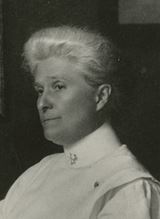 W
WAnna Caroline Maxwell, was a nurse who came to be known as "the American Florence Nightingale". Her pioneering activities were crucial to the growth of professional nursing in the United States.
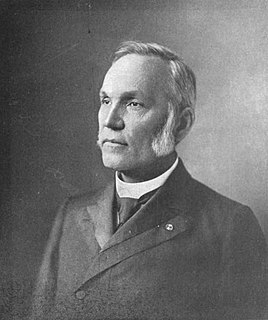 W
WHenry Christopher McCook was an American Presbyterian clergyman, naturalist, and prolific author on religion, history, and nature. He was a member of the celebrated Fighting McCooks, a family of Ohio military officers and volunteers during the American Civil War.
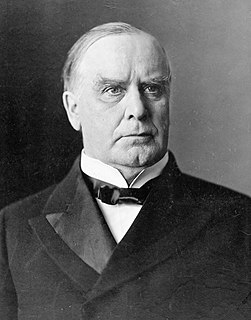 W
WWilliam McKinley was the 25th president of the United States, serving from 1897 until his assassination in 1901. He was president during the Spanish–American War of 1898, raised protective tariffs to boost American industry, and rejected the expansionary monetary policy of free silver, keeping the nation on the gold standard.
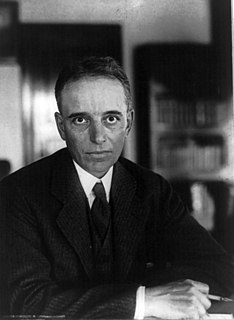 W
WWilliam DeWitt Mitchell was an American attorney who had served as both Solicitor General of the United States under President Calvin Coolidge and United States Attorney General under President Herbert Hoover.
 W
WEugenio Montero Ríos was a leading member of the Spanish Liberal Party before being part of a 1903 schism that divided it. He also served briefly as Prime Minister of Spain. He played a role in the 1898 Treaty of Paris that ended the Spanish–American War as he was then President of the Senate of Spain.
 W
WFrancis Murphy was an American temperance evangelist.
 W
WFrank Hamilton Newcomb was a United States Revenue Cutter Service commodore, best known for his actions at the Battle of Cárdenas during the Spanish–American War.
 W
WWilliam Frederick Carl Nindemann was a German-born American Arctic explorer and recipient of the Congressional Silver Jeannette Medal.
 W
WEdmond Favor Noel was an American attorney and politician who served as governor of Mississippi from 1908 to 1912. The son of an early planter family in Mississippi, he became a member of the Democratic Party.
 W
WPedro Alejandro Paterno y de Vera Ignacio was a Philippine politician infamous for being a turncoat. He was also a poet and a novelist.
 W
WAlexander Cummings McWhorter Pennington Jr., was an artillery officer and brigadier general in the United States Army and a veteran of both the American Civil War and Spanish–American War.
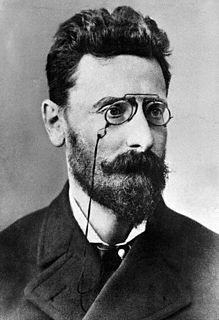 W
WJoseph Pulitzer was a Hungarian-born American newspaper publisher of the St. Louis Post-Dispatch and the New York World. He became a leading national figure in the Democratic Party and was elected congressman from New York. He crusaded against big business and corruption, and helped keep the Statue of Liberty in New York.
 W
WPaciano Rizal Mercado y Alonso Realonda was a Filipino general and revolutionary, and the older brother of José Rizal, the national hero of the Philippines.
 W
WAndrew Summers Rowan was born in Gap Mills, Virginia, the son of John M. Rowan and Virginia Summers. He was an American army officer who served in the Spanish–American War, the Philippine War, and the Moro Rebellion, and became famous for reportedly delivering a message to Gen. Calixto Garcia in Cuba.
 W
WAntero Rubín Homent was a Spanish general and politician noted for his long service in Cuba. He fought in the Spanish–American War, served in the Cortes Generales, and spent the final years of his life as Senator for the province of Zamora.
 W
WJames Brown Scott, J.U.D. was an American authority on international law.
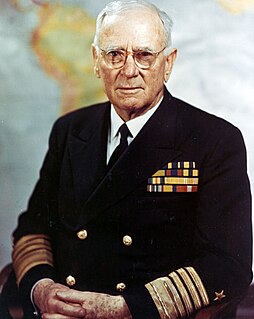 W
WWilliam Harrison Standley was an admiral in the United States Navy, who served as Chief of Naval Operations from 1933 to 1937. He also served as the U.S. ambassador to the Soviet Union from 1941 until 1943.
 W
WGeneral Charles Pelot Summerall was a senior United States Army officer. Summerall commanded the 1st Infantry Division in World War I, was Chief of Staff of the United States Army from 1926 and 1930, and was President of The Citadel between 1931 and 1953.
 W
WManuel Tinio y Bundoc was the youngest General of the Philippine Revolutionary Army, and was elected Governor of the Province of Nueva Ecija, Republic of the Philippines in 1907. He is one of those considered to be the three "Fathers of the Cry of Nueva Ecija", along with Pantaleon Valmonte and Mariano Llanera.
 W
WThe United Spanish War Veterans was an American veterans organization which consisted of veterans of the Spanish–American War, Philippine–American War and China Relief Expedition.
 W
WJames Kimble Vardaman was an American politician from the U.S. state of Mississippi and was the Governor of Mississippi from 1904 to 1908. A Democrat, Vardaman was elected in 1912 to the United States Senate in the first popular vote for the office, following adoption of the 17th Amendment. He defeated incumbent LeRoy Percy, a member of the planter elite. Vardaman served from 1913 to 1919.
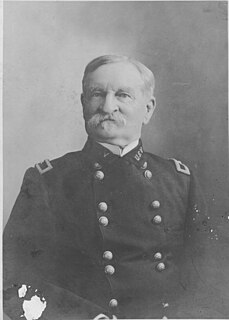 W
WSamuel M. Whitside was a United States Cavalry officer who served from 1858 to 1902. He commanded at every level from company to department for 32 of his 43 years in service, including Army posts such a Camp Huachuca, Jefferson Barracks, and Fort Sam Houston, the Departments of Eastern Cuba and Santiago and Puerto Principe, Cuba, commanded a provisional cavalry brigade, a squadron in the 7th Cavalry Regiment, and a troop and platoon in the 6th Cavalry Regiment. The pinnacle of his career was serving as the commanding general of the Department of Eastern Cuba before retiring in June 1902 as a brigadier general in the U.S. Army.
 W
WAlfred Alexander Woodhull was an American army surgeon. In 1885, he received the gold medal of the Military Service Institution and in 1907 the Seaman essay prize. Woodhull was the first to call to the attention of the service the necessity of co-operation between the medical and line officers in the promotion of military hygiene.